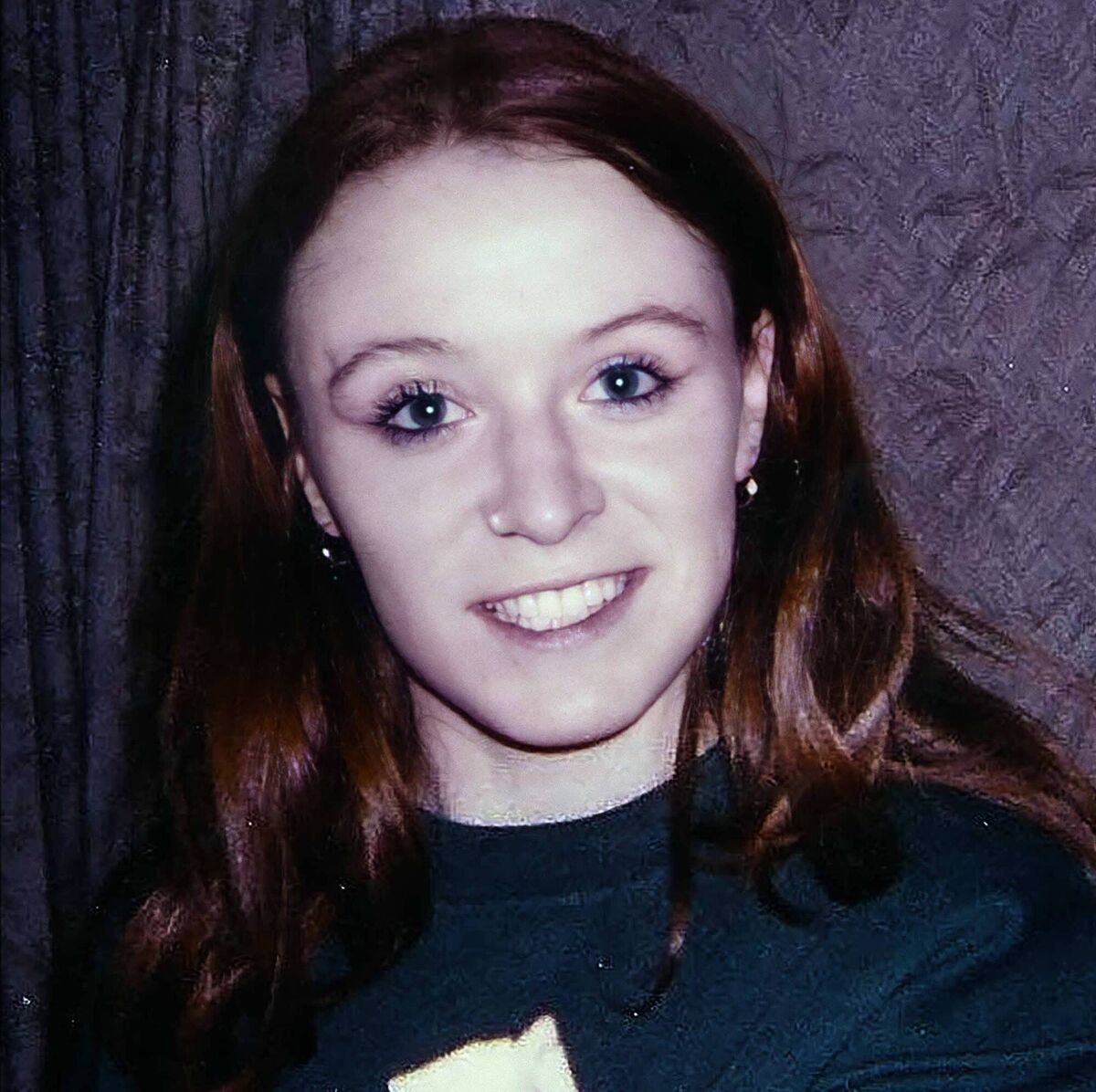
Twenty Years Later, Justice Still Eludes Emer O'Loughlin's Family
On a quiet April morning in 2005, Shane Bowe kissed his girlfriend goodbye and headed off to work, leaving 23-year-old Emer O'Loughlin alone in their caravan in rural County Clare, Ireland. It was the last time he would see the woman he loved alive. By evening, Emer would be dead, her body discovered in the charred remains of a neighbor's caravan, and her suspected killer would begin one of Ireland's most audacious and enduring disappearing acts.
Twenty years later, the case of Emer O'Loughlin remains one of Ireland's most haunting unsolved murders—a story of brutal violence, calculated deception, and a family's relentless pursuit of justice against seemingly impossible odds.
A Life Cut Short
Emer O'Loughlin was the embodiment of youthful promise and artistic passion. Born to parents Josephine and Johnny O'Loughlin in Galway, she was pursuing her dreams as an art student, with a particular talent for photography and drawing. Those who knew her described her as a "gentle soul who loved living in the rural country"—a young woman who found beauty in Ireland's sweeping landscapes and captured it through her artistic lens.
After completing a year-long world trip with her long-term boyfriend Shane Bowe, Emer had returned to Ireland with plans for the future. The couple had chosen to live modestly in a caravan on a site in Ballybornagh, County Clare, saving money with the goal of eventually building their own home together. It was a temporary arrangement that spoke to their practical nature and shared dreams—dreams that would be violently shattered on April 8, 2005.
The Day Everything Changed
Friday, April 8, 2005, was declared a public holiday in Ireland for the funeral of Pope John Paul II. For Emer, it meant a welcome day off from her college classes—time she might have spent on her art, or simply enjoying the quiet countryside she loved so much. Shane, however, still had to work that morning, but before leaving, he noticed a problem: the electricity supply to their caravan had failed.
This seemingly minor inconvenience would prove fatally significant. Emer's phone had died and needed charging, so Shane suggested she ask their neighbor in an adjoining field—a man named John Griffin—if she could charge it at his place. It was a reasonable request between neighbors, the kind of small favor that defines rural community life. Shane left for work, completely unaware that he was sending the woman he loved into mortal danger.
A Phone Call That Changed Everything
While at work later that day, Shane received the call that would forever alter his life. There was a fire at the caravan site—a serious one. Racing back home, he arrived to find not his own caravan ablaze, but his neighbor John Griffin's, consumed by fierce flames that painted the Clare countryside in ominous orange light.
The fire department worked frantically to extinguish the blaze, but when the flames finally died and the smoke cleared, the horror became apparent. Human remains were discovered among the wreckage—so badly burned and mutilated that investigators couldn't initially determine whether they belonged to a man or woman. The body was, in the clinical language of forensic reports, "disfigured and mutilated" beyond recognition.
For Shane, the next week must have been a waking nightmare of uncertainty and dread. Finally, the devastating confirmation came: DNA analysis positively identified the remains as those of Emer O'Loughlin. The gentle art student who had simply gone to charge her phone had somehow ended up dead in her neighbor's burning caravan.
The Disappearing Neighbor
Even more disturbing than the discovery of Emer's body was the complete absence of John Griffin, the caravan's owner. When Gardaí launched their search for Griffin, they found him in Galway City, where he claimed to have spent the previous night with a relative. His explanation was simple and seemingly innocent: he knew nothing about the fire that had consumed his home and killed his young neighbor.
But Griffin's behavior in the days that followed was anything but innocent. Just two days after his initial interview with police, he made a dramatic and telling move. Griffin traveled to Inis Mór, one of the remote Aran Islands off Ireland's western coast, where he barricaded himself inside Dun Aengus, an ancient stone fort perched dramatically on the island's cliffs.
What followed was a nine-hour standoff with Gardaí—a tense confrontation that ended with Griffin's capture and his subsequent transport to a psychiatric hospital in Galway City. To outside observers, it might have seemed like the erratic behavior of a man suffering a mental breakdown. But Griffin's next move revealed a much more calculated mind at work.
The Great Escape
Just five days after being admitted to St. Bridgid's psychiatric hospital in Ballinasloe, John Griffin simply walked out. He had transformed his appearance, shaving off both his head and beard, creating a dramatically different look from the man who had been admitted days earlier. Security footage would later show him boarding a ferry back to Inis Mór, the same island where he had staged his dramatic standoff with police.
What Gardaí discovered next was chilling in its implications. At the edge of a cliff on Inis Mór, they found Griffin's clothes—neatly folded, as if their owner had carefully prepared for what appeared to be a final act. The scene was staged to look like suicide, a man driven to take his own life by guilt or mental anguish.
But investigators weren't convinced. The careful folding of the clothes, the calculated timing of Griffin's escape, and the convenient nature of his apparent suicide all suggested something far more sinister: a carefully orchestrated fake death designed to throw off pursuit and allow a killer to vanish without a trace.
The Horrific Truth Emerges
For five years, Emer's death remained classified as suspicious but not definitively murder. The condition of her remains had made it impossible for the original coroner to determine a precise cause of death. But Emer's family refused to accept that their daughter's death might have been accidental. They knew in their hearts that she had been murdered, and they campaigned tirelessly for a more thorough investigation.
In 2010, their persistence paid off. Emer's body was exhumed for a second autopsy, and this time, advanced forensic techniques revealed the horrific reality of her final moments. The examination uncovered numerous cuts on her skull and spine—injuries that could only have been inflicted by extreme violence. Most chilling of all, investigators concluded that Emer had been attacked with a machete-like weapon before the fire was set.
The evidence painted a picture of unimaginable brutality. Emer had been subjected to a violent and aggressive assault that had ultimately killed her, and then her attacker had set fire to the caravan in an attempt to destroy the crime scene and conceal the evidence. Adding another layer of disturbing evidence, investigators revealed that a traditional Nepalese knife had been recovered from the original wreckage—a detail that had somehow been overlooked or underemphasized in the initial investigation.
The case was immediately upgraded to a murder investigation, and an Interpol notice was issued for John Griffin's arrest. But by then, Griffin had already had five years to disappear into whatever new identity he had crafted for himself.
Two Decades of Shadows
In the twenty years since Emer's murder, John Griffin has become something of a ghost—a man who exists in alleged sightings and unconfirmed reports across Europe. Investigators believe he is living under an assumed name, possibly drawing on his previous experience living in Scotland under the alias "John McDermott" before returning to Ireland.
The search for Griffin has taken on an international scope, with cooperation between Irish Gardaí, Scottish police, and Interpol. In 2014, investigators believed they had traced him to Edinburgh, following what they described as a paper trail. Then, in 2022, came what seemed like a breakthrough: Griffin was tracked to a drug rehabilitation facility in Scotland through coordinated international police work.
But once again, Griffin proved to be one step ahead of justice. By the time authorities arrived at the facility, he had already been discharged. It was a bitter reminder of how a determined fugitive with resources and planning can stay ahead of even sophisticated international law enforcement efforts.
Recent Developments and Renewed Hope
April 2025 marked the twentieth anniversary of Emer's murder, and with it came renewed attention to the case. Gardaí launched another public appeal for information, with a spokesperson stating firmly that they believe John Griffin is still alive and that someone, somewhere, must know where he is.
It was also around this time that the O'Loughlin family learned disturbing new details about Emer's death—information that had somehow been withheld from them for nearly fifteen years. Emer's sister, Pam O'Loughlin, revealed that the family had only learned the true extent of Emer's injuries four months prior to the anniversary, despite the second autopsy being conducted back in 2010.
The details Pam shared were heartbreaking in their brutality. Emer had been completely decapitated and had suffered numerous broken ribs, indicating she had "suffered terribly" in her final moments. The fact that the family had been kept in the dark about these details for so long adds another layer of anguish to their decades-long wait for justice.
##The Ongoing Search for Justice
Today, the search for John Griffin continues, though the trail has grown cold and the challenges have multiplied. As Emer's family has noted with resigned despair, "He could be anywhere in the world now, using any name." The passage of time has only made Griffin more difficult to find, as he has had two decades to establish new identities, build new lives, and cover his tracks.
Yet the Garda investigation continues, and the family's determination never wavers. They understand that unless John Griffin is apprehended, Emer's case will never be truly closed, and they will never receive the peace and justice they desperately deserve.
A Legacy of Love and Determination
The story of Emer O'Loughlin is ultimately about more than just an unsolved murder—it's about the enduring power of family love and the relentless pursuit of justice against overwhelming odds. For twenty years, the O'Loughlin family has refused to let their daughter's memory fade or her killer escape accountability.
Emer was a young woman with artistic talents and a love for life's simple beauties. She deserved to grow old, to develop her artistic gifts, to build that house with Shane, to become the person she was meant to be. Instead, her life was cut short in the most brutal way possible by someone who then had the calculated coldness to stage his own death and disappear.
But Emer's story is not over. As long as John Griffin remains free, as long as questions remain unanswered, and as long as her family continues to fight for justice, Emer O'Loughlin's legacy will be one of a life that mattered, a family that loved, and a quest for truth that refuses to end.
Anyone with information about the whereabouts of John Griffin is urged to contact Irish Gardaí or their local law enforcement agency. After twenty years, it's time for this killer to face justice, and for the O'Loughlin family to finally find peace.
Sources
https://m.independent.ie/irish-news/family-of-emer-oloughlin-appeal-for-information-on-19th-anniversary-of-her-violent-death/a902392677.html
https://m.sundayworld.com/crime/irish-crime/sister-of-murdered-emer-oloughlin-publishes-last-known-image-of-chief-suspect/a176727619.html
https://www.dailymail.co.uk/femail/article-13287177/The-tragic-murder-Emer-OLoughlin-suspect-faked-death-19-years-later.html
https://www.dailymail.co.uk/news/article-14605547/sister-decapitated-woman-murdered-unrecognisable-sick-details.html
https://www.rte.ie/news/ireland/2025/0408/1506356-emer-oloughlin-investigation/
